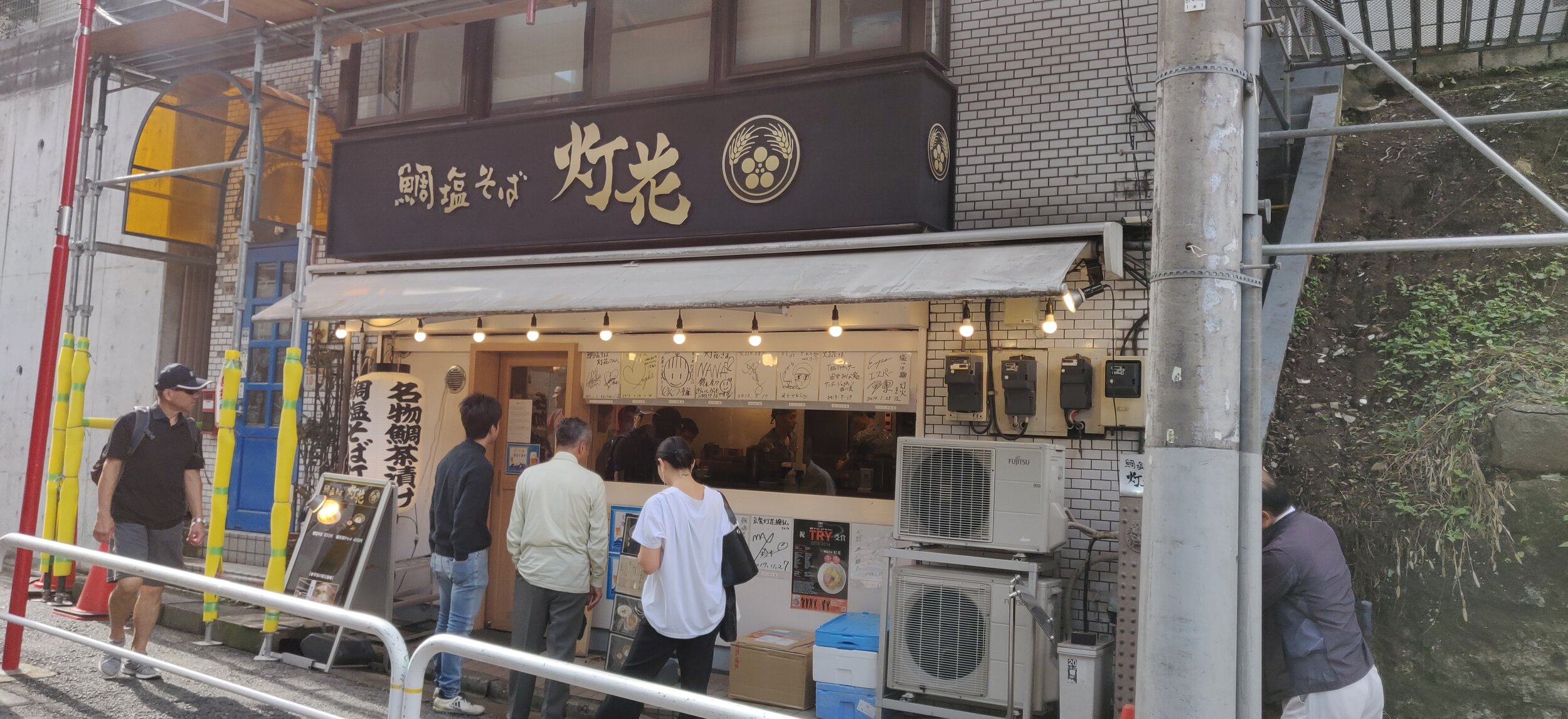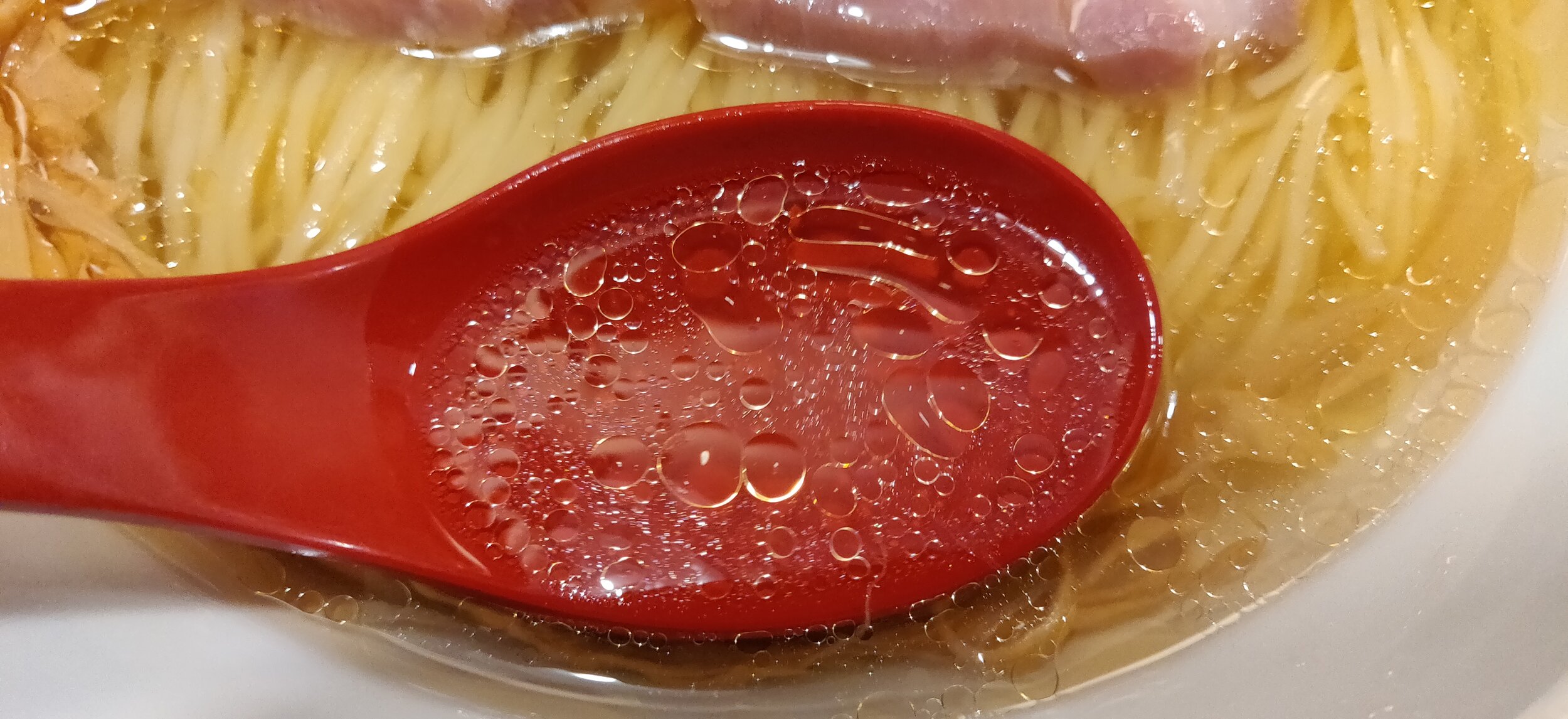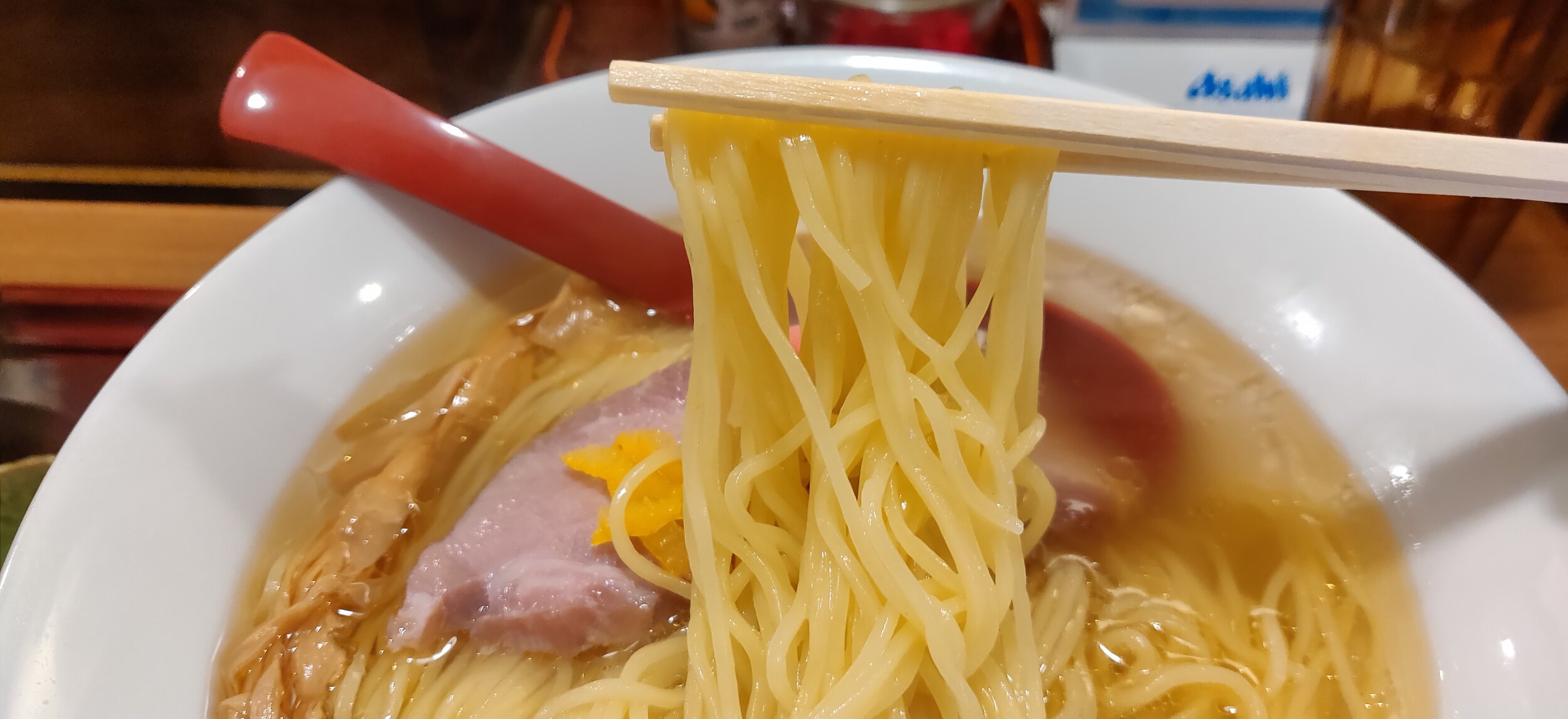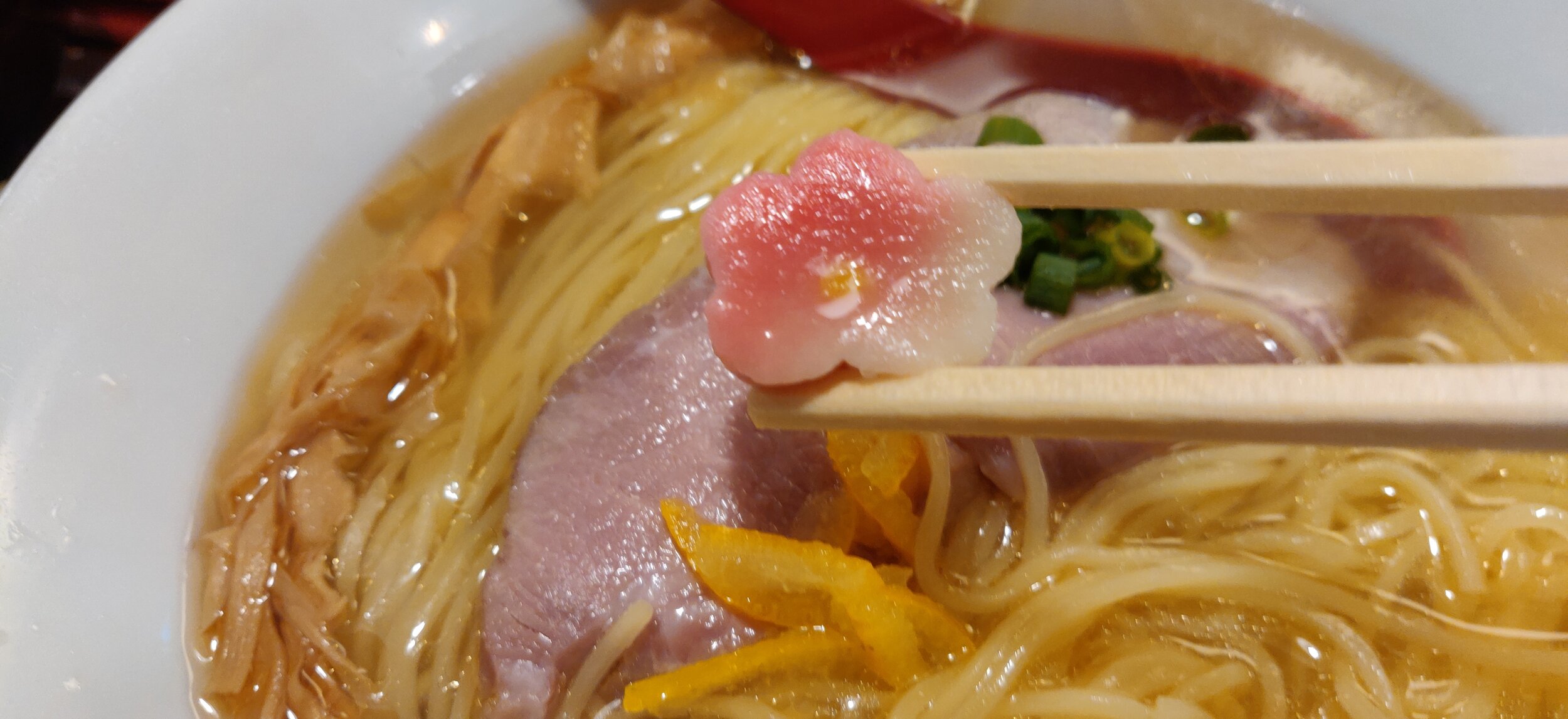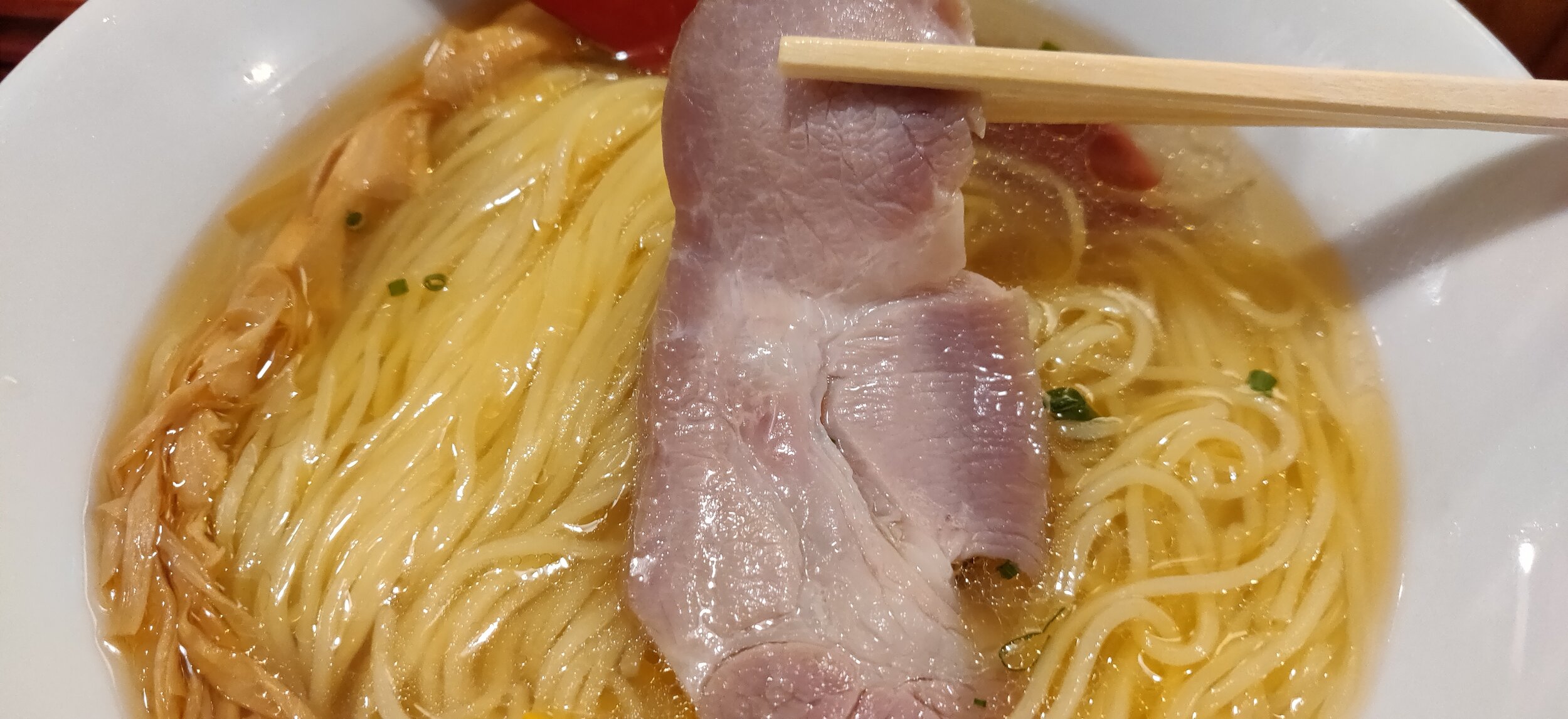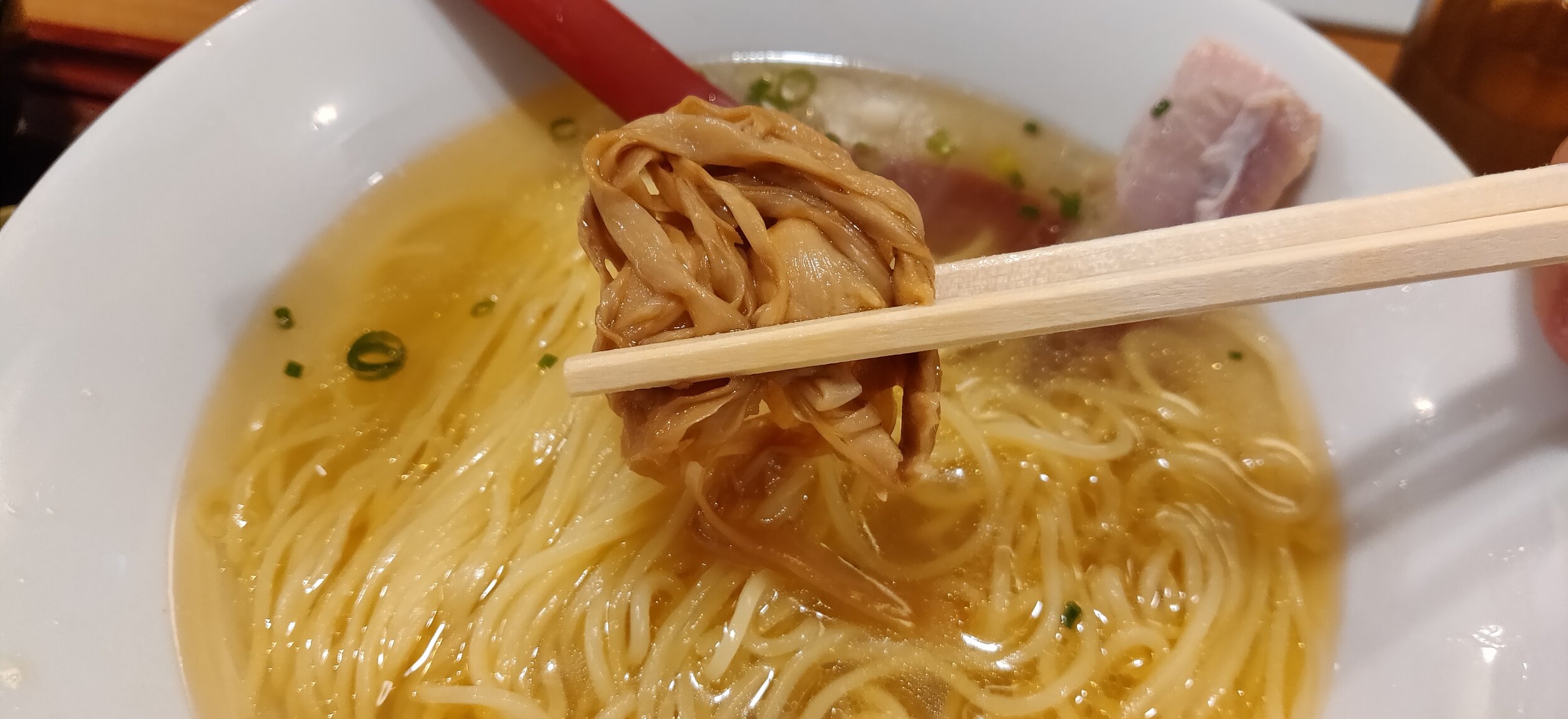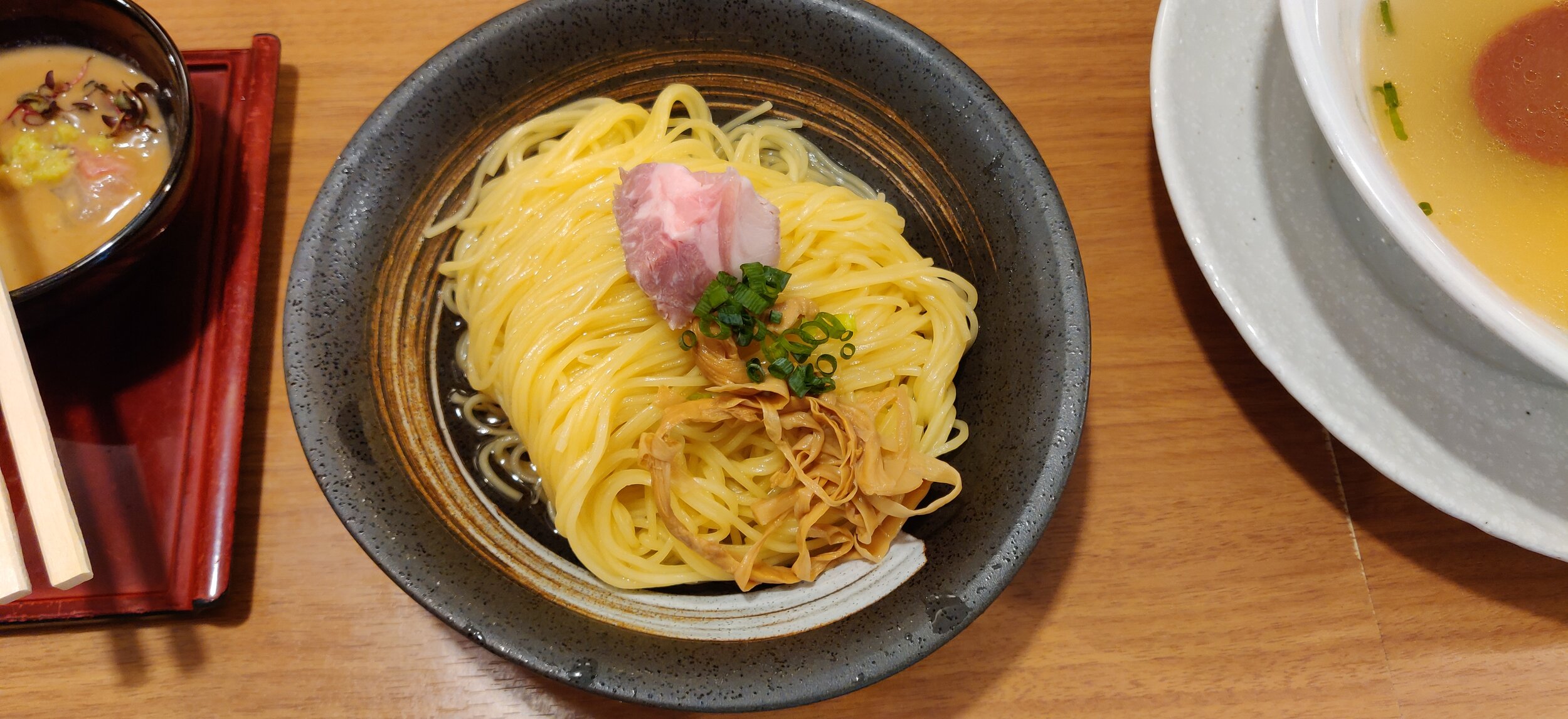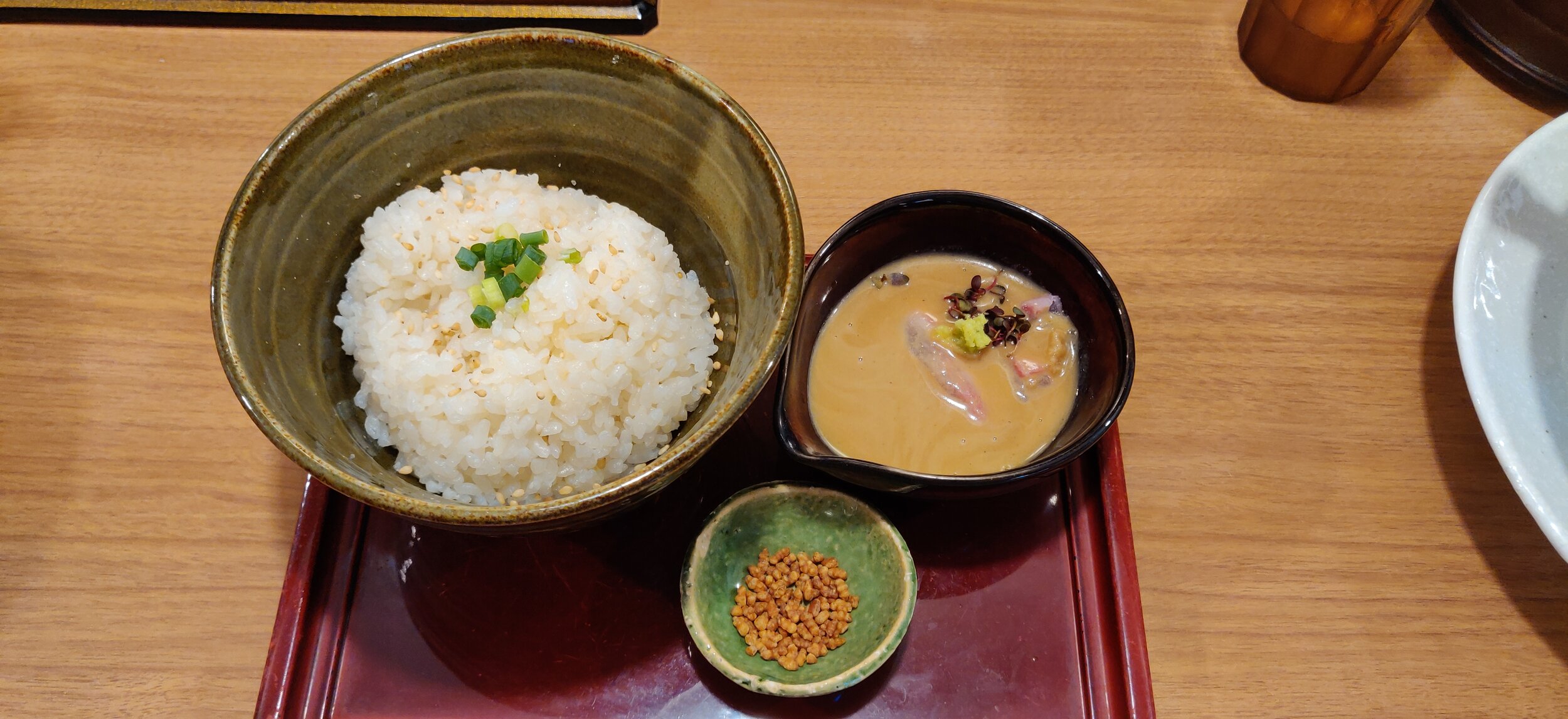Tai Shio Soba Touka ( 鯛塩そば 灯花) Quality Fish Based Ramen in Shinjuku; Akebonobashi, Tokyo
Back maybe 15 years ago, there was a phase in the Tokyo ramen scene where a thick, rich, tonkotsu like ramen was all the craze and it felt like every restaurant was churning out these dense soups, known as Doro-kei, for their ramen. A main characteristic of this style was incredibly rich flavors that were simmered so long that the soup became viscous, which is where the term Doro-kei, or thick style, originated. Since then, a number of ramen trends and phases have come and gone, but one that has stuck around and evolving now more than ever is the antithesis of the Doro-kei, the tanrei, fish based ramen. The tanrei ramen is essentially the opposite end of the ramen spectrum from Doro-kei in which the flavor profile is more light, airy, and refreshing rather than rich, creamy, and incredibly filling. Obviously, I eat every and all types of ramen so I personally don’t have a preference for either or, I do enjoy taking breaks from heavier ramen broths with a bit of refreshing seafood based ramen from time to time. I have my go to, which is Housenka in central Shinjuku, but after a bit of research, I found Touka and it may have won me over. While it is a bit far from central Shinjuku station, it definitely deserves a visit and well worth the time it takes to make it here. Hopefully you feel the same if you feel inclined to try this fantastic restaurant out.
So the restaurant itself is technically in Shinjuku city, but on the outskirts so you’ll want to take a subway line towards Akebonobashi and the shop is a five minute walk south from the station exit. Touka is one of the few ramen restaurants nowadays that is open all year and they don’t take breaks between lunch or dinner so you can come here from 11:00 to 22:00 everyday to grab a bowl. In 2019, Touka was selected as one of the top 100 ramen restaurants in Tokyo by Tabelog.com and has since seen an uptick in popularity as well as foreign clientele so the ticket machines includes English. Unfortunately, for whatever reason, they didn’t translate the bottom row of toppings which are, in order from left to right, picture with the chef (yes, really and for free), menma bamboo shoots, ajitama marinated soft boiled egg, Aedama (their rendition of extra noodles which I’ll explain later), Niku Mashi extra pork char siu, and the last two in white are the specialty menus which I assume would be advertised outside if available. I didn’t see any specialty menu on my visit, but if I ever come across it on my future trips here, I will be sure to write about it and edit this review. Anyways, I posted a picture of the ticket machine here so you can have an idea of what to order before arriving, but I highly recommend going for their number 1 most popular item which is the Shio Soba and Ochzauke set. Ochazuke is essentially Japanese style rice porridge in which broth is poured on top a bed of rice. It’ll usually be accompanied by some accoutrements which here at Touka is Tai, or in English snapper, based. It was one of the highlights of my trip so I highly recommend ordering the set. I also ended up ordering the Aedama, or extra noodles, which if you’re familiar with ramen restaurants that serve this style of extra noodles, is quite unique. If you’re hungry and confident you can finish an extra serving, I recommend trying it out just to see for yourself what it’s like.
So after purchasing my ticket, I made my way to my seat and was served in about 10 minutes time due to how crowded it was when I arrived. If I had come a bit earlier, before the lunch hour rush, I imagined my bowl would have been ready sooner, but since there was a queue when I arrived, I had a bit of an extra wait. Anyway, after my wait I was presented with their beautiful rendition of the Tai, or Snapper, Shio Soba. I didn’t realize this when I ordered my set, but the set does not include a marinated soft boiled egg. I don’t mind as it’s not necessarily a must have in my opinion, but if you do want the egg in your ramen, make sure to order it as a side menu item. Personally, this ramen didn’t need the egg as I think the heavy flavors of the egg yolk is better kept away from this light, flavorful broth, but to each their own. The ramen was however topped with a long strand of their menma bamboo shoots, a slice of pork char siu, bit of green onions, yuzu zest, and a traditional Japanese dehydrated tofu. I really like the aesthetic and after seeing fellow reddit user Ramen_Lord’s obsession with the noodle fold, I couldn’t help but admire it myself.
Soup here is absolutely fantastic and exactly what I crave when I want some ramen, but don’t feel like having anything too rich or dense. The Tai broth is ridiculously flavorful and jam packed with umami. The way I describe umami is the sensation you feel when you eat a raw oyster, a bit of puckering and twang in the corner of your jaw. As the broth is strictly snapper, you really feel this umami sensation to the fullest as well as the oily flavors you’ll get from the flesh. You can see a ton of oily bubbles floating on the service, but its not as insistent as you might imagine. I felt like it was more on the refreshing end and served just to add flavor rather than making the soup heavy. Seasoning tare is Shio, or salt, and pairs perfectly with the seafood, snapper broth. Not too many fish based ramen broths will use anything other than shio since the pairing of seafood with the salt in which the fish comes from is just natural. Touka is no exception and their use of natural sea salts gives it a mineraly flavor you can’t get from processed salts. Literally, the salt flavors has the essence of the ocean and I love the combination with the broth. For those who might be weary of a fish-y broth, the typical smell and odor that you get from fish is completely cooked out and you really only get the savory, umami flavor of the snapper so I think even those who aren’t particularly fond of fish can enjoy this bowl.
Noodles are on the thinner end, which is pretty typical with seafood broths as you don’t want much of the flour flavor to overpower the delicate fish soup, and had a nice bite and snappiness to them (no pun intended). It was cooked perfectly in which it didn’t melt in to the soup, but also wasn’t too hard. Pork char siu was similar in idea in which it wasn’t seasoned heavily so it doesn’t add any unneeded flavors to the soup, but could easily stand on its own. Menma bamboo shoots were home-seasoned and was a good choice as store bought menma typically comes heavily seasoned. If anything, the menma bamboo shoot added a texture variety rather than anything flavor wise and I liked the contrast between the stringy menma and the snappy noodles. Yuzu citrus was fantastic and the acidity helped break through a bit of the oiliness of the soup and mellowed out the bowl. Dehydrated tofu cakes, shaped as a sakura, soaked up the soup beautifully and provided another texture variety. I quite enjoyed this to the typical naruto fishcake, and added the same color variety the naruto would provide. Last picture is the extra order of noodles which comes with some extra toppings as well as a bit of seasoning sauce underneath. The seasoning sauce for this is different in flavor from the ramen bowl and has some vinegar added to give a fantastic tartness to change up the soup for the second round. Before you throw it in to the bowl though, make sure to give it a nice mix and have some as is. The noodles soak up the vinegary soy sauce seasoning and the combination with the starchiness of the freshly cooked noodles is fantastic. Once you’ve properly enjoyed it as is, throw it in to the soup and enjoy as it changes up the entire complexity of the soup. The tartness of the vinegar breaks down all of the fats and being able to enjoy multiple flavors in one dish, for only an extra hundred yen, was definitely worth it (no connection to the youtube video series).
Before you finish up all of your soup (yes, I know it’s hard), you need to start eating some of the Ochazuke and its accompanied accoutrements. So along with the bowl of rice which is topped with a bit of sesame seeds and green onions, you get a bit of snapper sashimi in a miso sauce and arare, or Japanese rice crackers. Definitely recommend trying a piece of the snapper in the miso first as is. It has a bit of plum flowers giving it some tartness and goes incredibly well with the fatty, meaty slice of raw snapper. Honestly, I felt like I was in a high end sushi restaurant as the snapper was of upmost quality and had some incredible flavors packed within. Miso adds some nuttiness to the snapper and gives off some great aromas with each bite. Once you’ve tried a slice, go ahead and pour it over your bowl of rice and ladle in some soup from your ramen until the rice is fully submerged. Add the arare, Japanese rice cracker over the top of the soup for some added texture and crunchiness and you’ll have yourself one of the best, most decadent ochazuke you can find in Tokyo. Having the balance of the umami packed snapper broth, with the meaty slice of the flesh was phenomenal and something that I couldn’t believe I could get at this price point. The miso is on the sweeter end so the mixture of the miso and ramen soup makes for a rather creamy combo and vastly different from a miso ramen. All the flavors were on point and felt necessary when enjoying snapper and while it might sound excessive, was definitely a must order to enjoy the meal to its full potential.
While it is a bit of a trek from central Shinjuku, Touka is still relatively close enough for a brisk walk, or very short train ride, so don’t let the distance deter you. Once you make that trek, you’ll be greeted with an amazing bowl of ramen as well as an unforgettable ochazuke that will have you feeling like you entered a proper high end Japanese restaurant. Decor mimics that vibe and I honestly didn’t feel like I was in a ramen shop. While it is a bit pricier than a typical bowl of ramen, I felt it was well worth the price point and I can’t wait to make my next visit here. If you do come and make a visit, be sure to let me know in the comment section below or tag me over on instagram @ramenguidejapan. Also, if you’re visiting Tokyo and feel a bit weary of making your way to these ramen shops, I run ramen tour guides over at airbnb so send me a message there and we can organize a personalized tour for you. Alright, end of my self-promotion…and thanks to everyone who read to the end.
